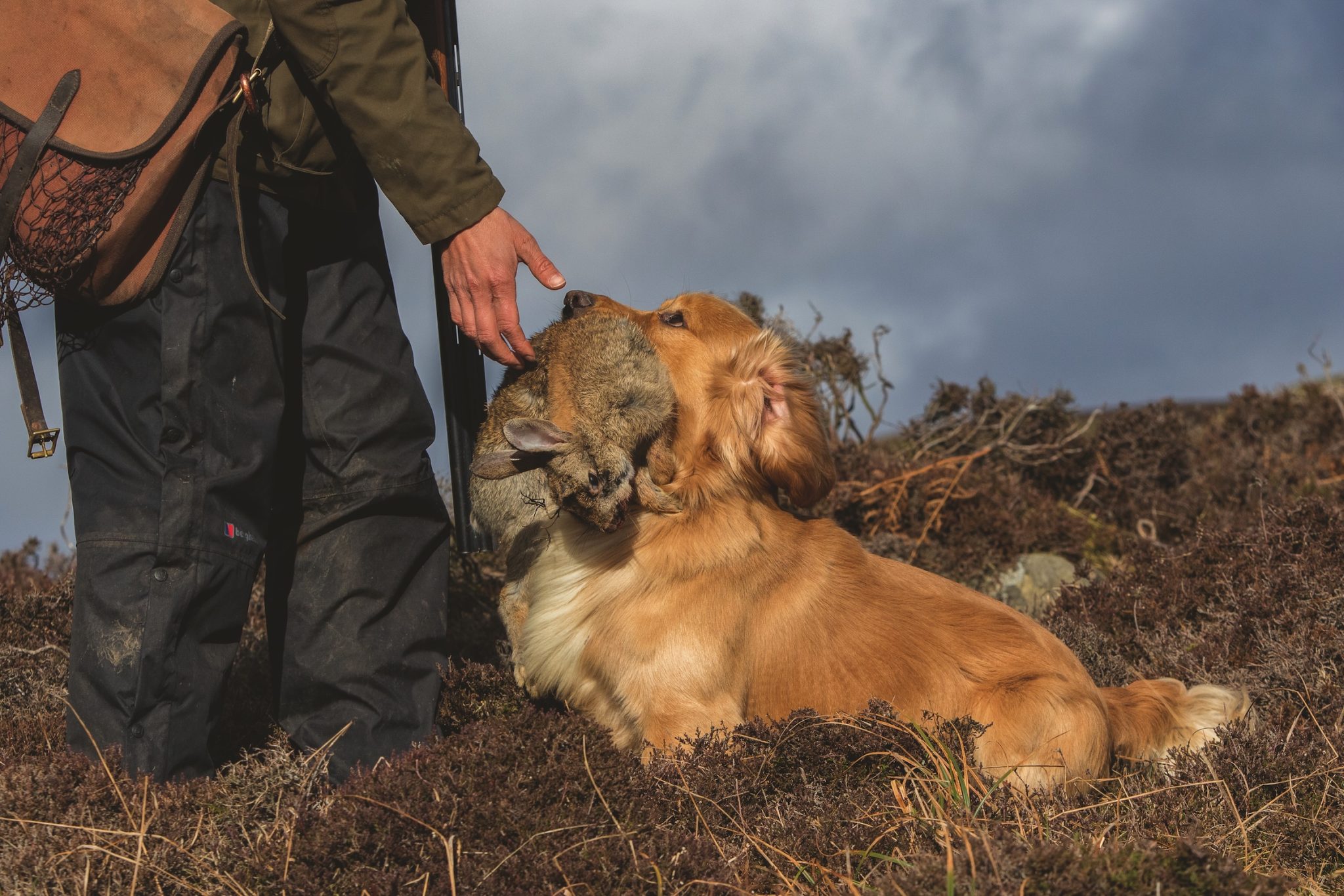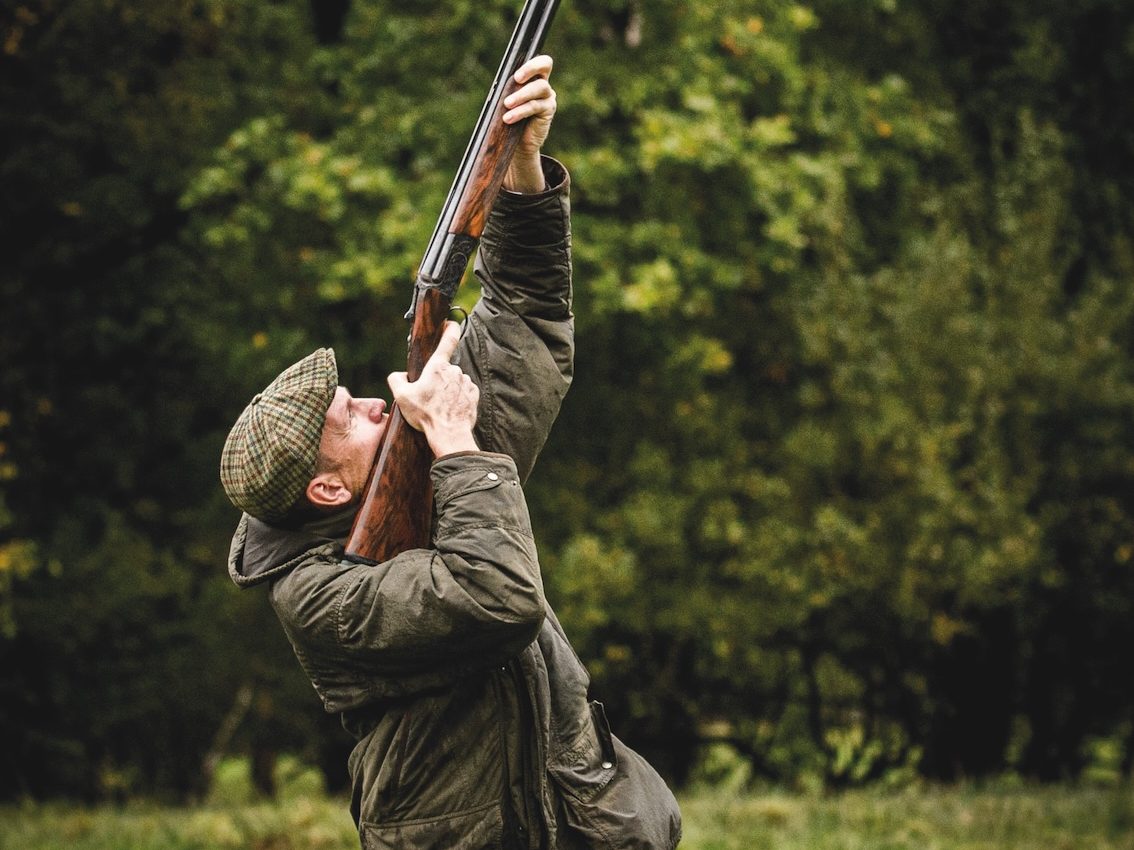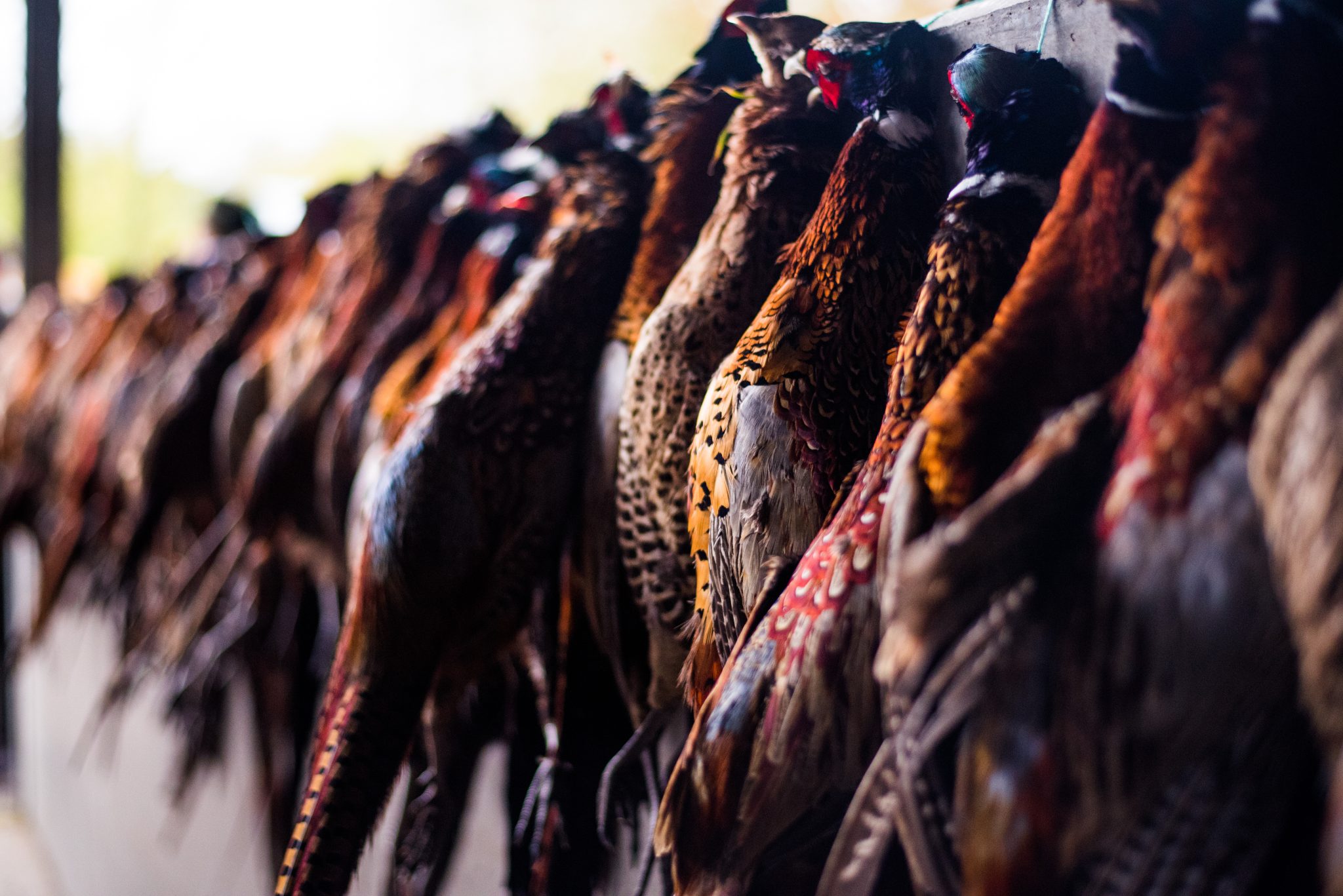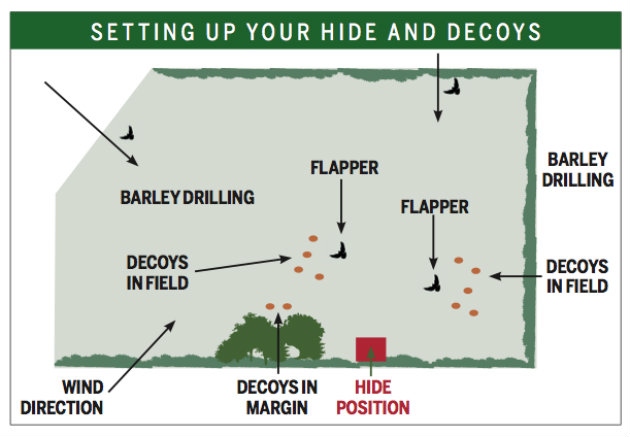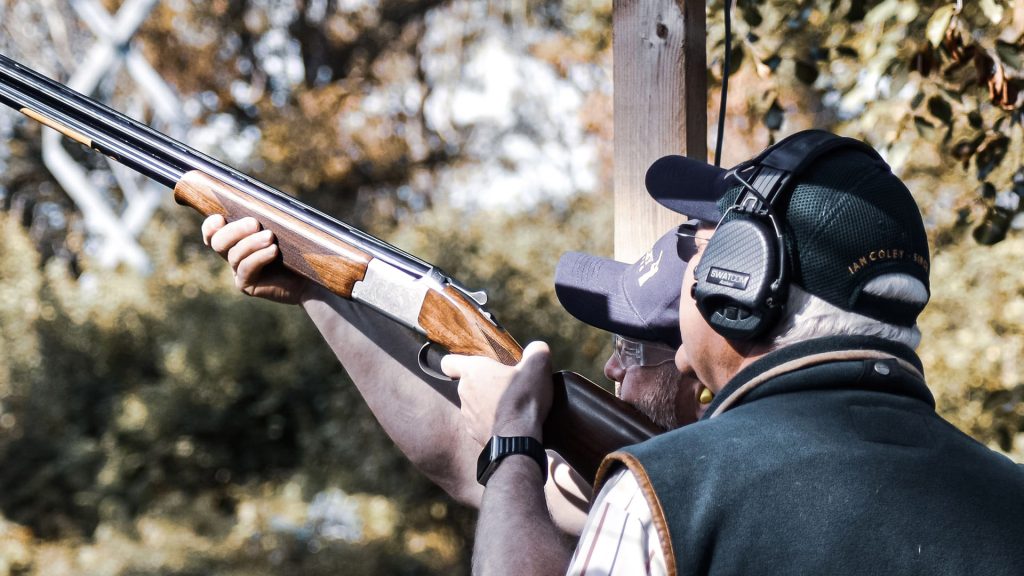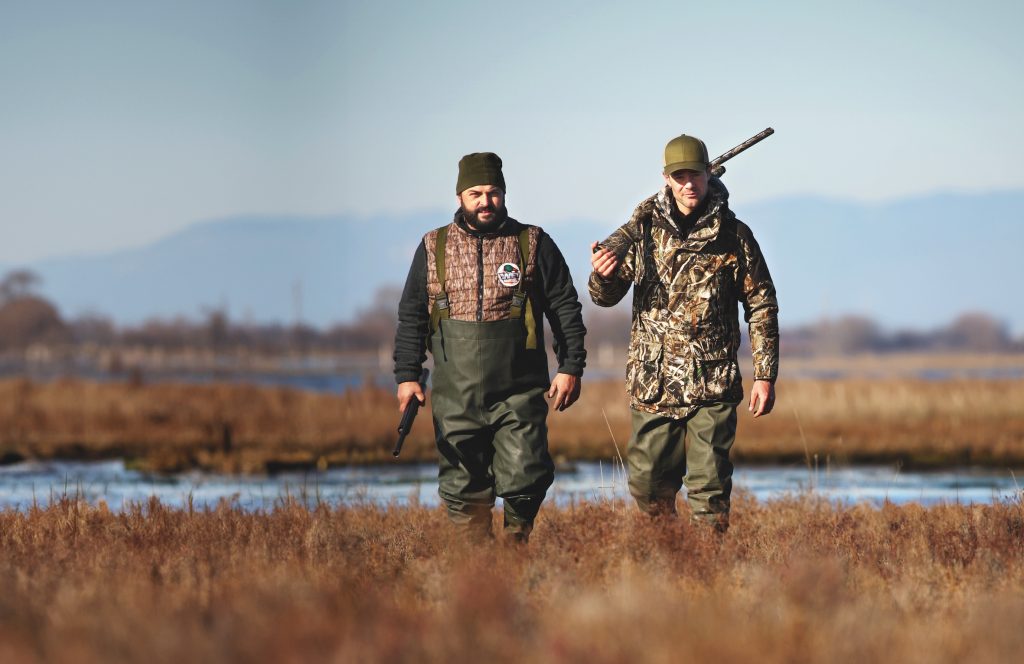Win CENS ProFlex DX5 earplugs worth £1,149 – enter here
Spring drillings and pigeons
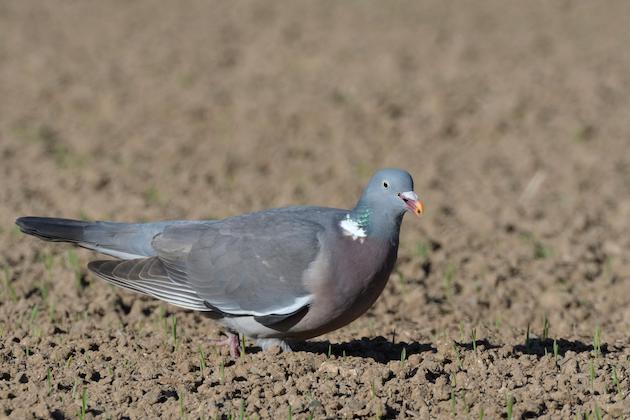 M6F4CE Wood pigeon (Columba palumbus) with a wheat seed in a recently drilled field, Cornwall, UK, April.
M6F4CE Wood pigeon (Columba palumbus) with a wheat seed in a recently drilled field, Cornwall, UK, April.
Pigeon shooting on spring drillings makes a big difference from shooting over winter crops. In the colder months you have to compete with chilly weather and the scarers set up by the local farmer.
Pigeon decoying should become easier from the spring drillings onwards and can be your first opportunity to make sound bags without too much difficulty.
Pigeons love spring barley, peas and beans. Even though modern machinery is effective at drilling deep, there is always a percentage of grain left. The concern is actually the cultivating equipment used after drilling: heavy rollers that bed in seed so that the pigeons can’t reach it.
Don’t risk letting spring drillings build with birds
Drillings today are patchier and, in many cases, only certain parts of drilled fields will provide easily accessible grain for birds to feed. The majority of spilt grain will be found round the field margins, tractor turning points or on areas where ground has been wet or even too hard for the seed to be drilled properly. Under no circumstance do you want to risk letting a drilling build with birds. The majority of drillings do not have the food source to support a hungry pigeon population for a few days and it won’t take them long to clear up any spilt food on top. The first spring drillings of the year will always be a huge draw, but as soon as drilling gets under way, the feeding opportunities for pigeon are greater and those to shoot good bags less. This is down to the amount of food available disbanding the density of pigeon populations in an area.
When to take your chance
As soon as you start to see 50 or more birds on a field, it is time. If you come across a drilling that is blue with birds, there is every chance that you have missed your opportunity and it is time to look elsewhere.
Timing is everything with spring drillings
Try to pre-plan your reconnaissance trips for drillings. If you communicate with the farmer, he will be able to give you ample warning so that you know when he is planning to start drilling. You want to know what is going in, where and when. Timing is everything with spring drillings if you want to make the most of it. I’ve seen birds starting to feed behind the drill, so you really need to be on the ball.
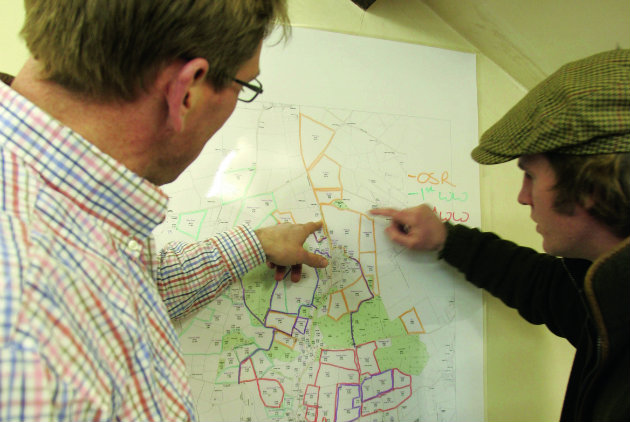
Liaise with the farmer to find out where and when he is planning to star drilling: timing is everything
Best conditions
Depending on the weather, the birds will show most interest in the afternoon, especially when the days are mild and there is some warmth in the sun. However, starting to look from 10am onwards on warm, dry days will give you plenty of time to watch. Warm, sunny days with little cloud cover and a light wind would be your optimum conditions for shooting over a fresh drilling.
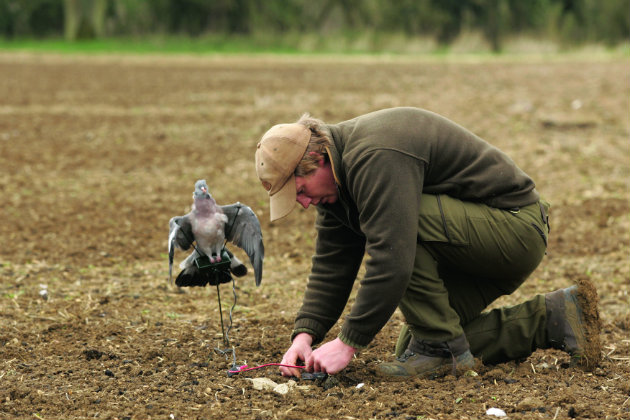
Flappers work better than magnets – make sure your other decoys have a mix of heads up and down
Decoying
Tactics for decoying will be different from those used on winter rape. Birds on drilling cover a lot of ground at speed and this is tricky to represent. Feeding birds also tend to operate in small groups. Showing small gangs of around six to eight dead birds works well, putting plenty of space between each decoy. Unlike on winter rape, where they feed tightly together, on drillings pigeon can feed some distance from each other. I try to represent with the decoys what I watch in my recon.
I will always put a few dead birds feeding on the field margins, then small gangs placed out looking busy on the field. Flappers are the best mechanical aid on drillings and act as a superb natural draw; I tend not to use magnets.
Use dead birds in great condition. They really stand out to arriving birds, especially with the sun shining off their backs. Don’t place all your decoys out with the heads up — from a distance, this will look like a wary group of birds. Mix it up, with your dead birds having heads up and heads down when trying to develop a decoying picture.
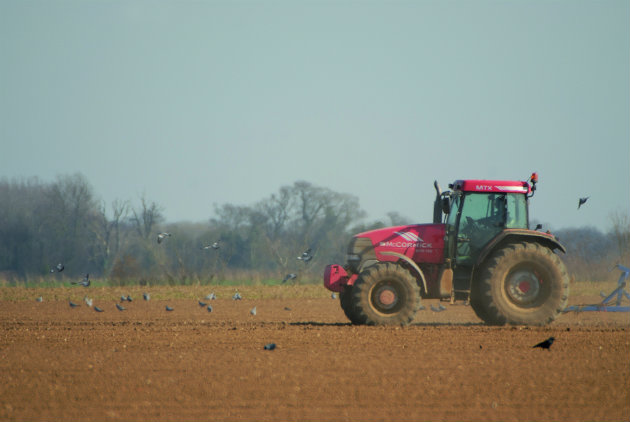
Once you see 50 or more birds feeding, its time to take your chance
Tom’s top tips for drillings
- Reconnaissance is important, especially with regard to the weather. The straightforward option may not be the right one when setting up. A warm afternoon with light cloud cover and a gentle breeze is ideal.
- Don’t risk a build-up. Usually, the food source available will not sustain an interested pigeon population for long.
- Once you see 50 or more birds feeding, take your chance.
- If birds use a wood as a roosting spot or resting wood around your drillings, resist setting up near it. It is easy to ruin your shooting.
- When decoying, use dead birds that are in a good condition. Flappers work really well to add movement.
- Choose flappers rather than magnets.
- Get your timings right. Shoot the drilling too early and you will not maximise the opportunity. Shoot it too late and you run the risk of missing out.
- Keep your decoy patterns tidy.Only leave the hide during quiet periods but always retrieve birds that are upside down if you think that arriving pigeon are becoming wary.
- Make sure your decoys represent what you have watched during your recon. Small gangs spaced apart give the impression of birds moving and feeding in the margins. You don’t need to use large numbers of decoys, but some should be laid with their heads up, others with heads down.
- If shooting a bean or pea drilling, a few days of rain can soften the crop on top. Birds will show a lot of interest in these because they are easier to digest.
This article was originally published in 2016 and has been updated.
Related Articles
Get the latest news delivered direct to your door
Subscribe to Shooting Times & Country
Discover the ultimate companion for field sports enthusiasts with Shooting Times & Country Magazine, the UK’s leading weekly publication that has been at the forefront of shooting culture since 1882. Subscribers gain access to expert tips, comprehensive gear reviews, seasonal advice and a vibrant community of like-minded shooters.
Save on shop price when you subscribe with weekly issues featuring in-depth articles on gundog training, exclusive member offers and access to the digital back issue library. A Shooting Times & Country subscription is more than a magazine, don’t just read about the countryside; immerse yourself in its most authoritative and engaging publication.



